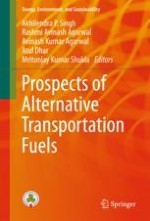This book discusses different types of alternative fuels, including biodiesel, alcohol, synthetic fuels, compressed natural gas (CNG) and its blend with hydrogen, HCNG, and provides detailed information on the utilization of these alternative fuels in internal combustion (IC) engines. Further, it presents methods for production of these alternative fuels and explores advanced combustion techniques, such as low-temperature and dual-fuel combustion, using alternative fuels. It includes a chapter on the soot morphology of biodiesel, which focuses on the toxicity. There are also four chapters on hydrogen-fueled engines, which discuss use of hydrogen in IC engines and also provide important information on the methodologies. This book is a valuable resource for researchers and practicing engineers alike.
